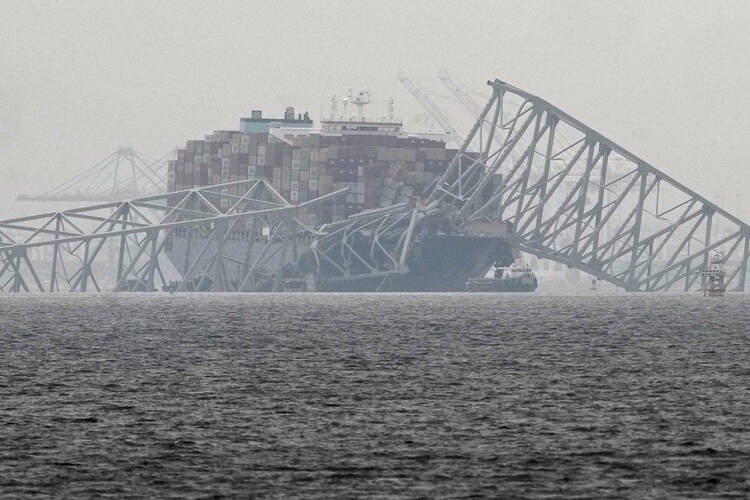Early on the morning of March 26, police in Maryland were able to halt traffic onto the Francis Scott Key Bridge within seconds of being warned that a giant container ship had lost steering and power while approaching it. But then, according to a recording of exchanges with police, bridge personnel and an emergency dispatcher, someone remembered the work crew still on the bridge.
One officer said that he was ready to drive over the bridge to warn the overnight crew fixing potholes of the danger as soon as another patrol car arrived to halt northbound traffic. He never got the chance.
The bridge was hit and tumbled down, taking with it six men. We don’t know the names of all of the men so far, but the Guatemalan, Honduran and Mexican consulates have acknowledged that citizens of their nations working together in the United States are among the missing and the presumed dead.
Maynor Yassir Suazo Sandoval, 38, father of two, was the youngest of eight siblings from Azacualpa, a rural mountainous area in northwestern Honduras along the border with Guatemala. The bodies of two other men were located by divers inside a red pickup submerged in about 25 feet of water near the bridge’s middle span. One was Dorlian Ronial Castillo Cabrera, 26, from Guatemala, and the other was 35-year-old Alejandro Hernández Fuentes, originally from Mexico.
And according to a statement posted by Casa, a local community organizing agency in Baltimore: “Miguel Luna, from El Salvador, left at 6:30 p.m. Monday evening for work and…has not come home. He is a husband, a father of three, and has called Maryland his home for over 19 years.”
I can’t be the only person who has noticed that all the men who died on the Key Bridge collapse were immigrants from Mexico and Central America, members of a workforce quietly doing a lot of the heavy lifting that keeps the North American economy humming. These people have become mostly invisible except when the broader public notices them doing yard work or pulling orders and tables together in restaurants, or spackling ceilings or struggling with heavy loads on construction sites.
They sometimes come into focus as targets of hysteria mongers who exploit their presence in the vast U.S. workforce to toss red meat to their political base.
Is it a different kind of exploitation now to reduce their deaths, six individual tragedies for the people who loved them, into just another political point?
Probably, but in the current climate, I can’t let this incident pass without calling some kind of attention to the obvious incongruity, the hypocrisy that smolders below all the discussion of immigration and people who immigrate to the United States, the documented or the undocumented who continue to just get the work done while Congress ignores its obligation to do the same. People just like these men who perished when the Key Bridge fell are often held up in xenophobic exercises that buy votes and campaign contributions by selling fear of the other, the outsiders “poisoning” America, according to presidential candidate Donald Trump.
Do I really have to say that this is not true? Do I have to reach for FBI crime figures or an analysis of GDP effects to prove that it is not so?
No, I don’t have to prove the worthiness of these men, who were working night shifts to support family both here and in their home nations, to anybody. The people who loved them already know their value.
There are millions more just like them in the larger society doing the second- and third-shift work no one really knows about but that everyone relies on, just like my Irish immigrant grandfather did working the docks of New York from Red Hook to the George Washington Bridge and my first-generation American father did saving the Bronx from the landlords who were burning it down.
I’m unhappily confident that immigrant workers like the men who died on the Key Bridge will continue to be vilified as the campaign season heats up this year. I’m just as confident that in a few decades time their descendants will, like me, be marveling in pride and gratitude at their self-sacrifice and courage.








